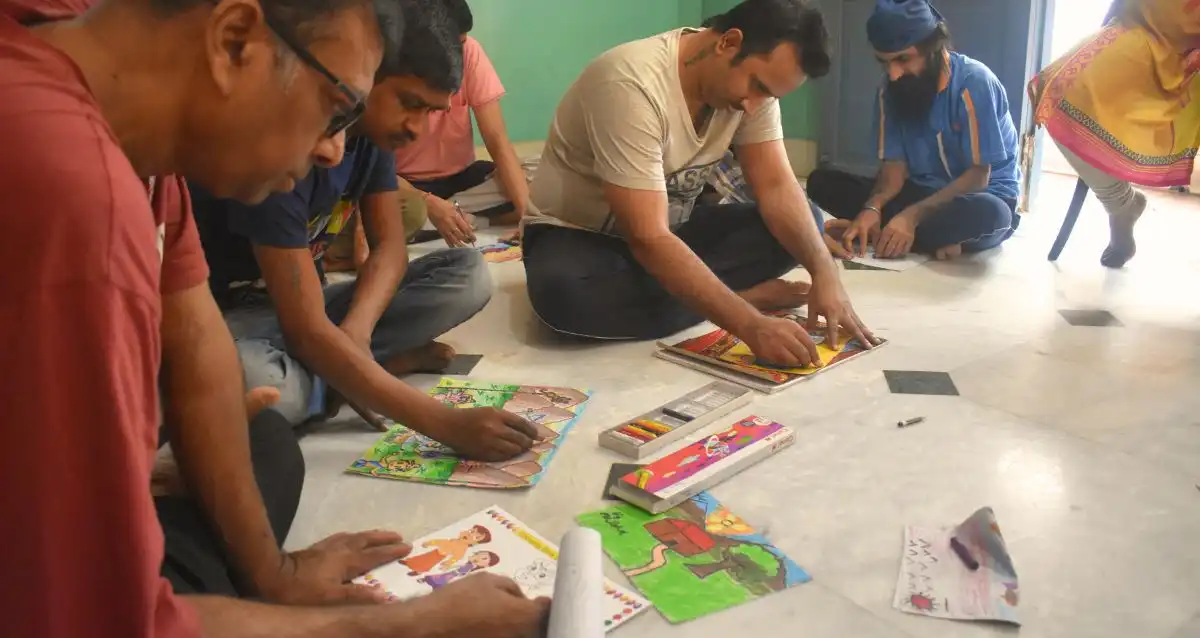Art Therapy: A Creative Path to Healing
Sometimes, words are unable to express how you are feeling or what you are going through. This is where art therapy comes in! Art therapy helps you process your emotions and express yourself through the medium of art. You do not necessarily have to be at the level of an artist to benefit from this kind of therapy. This approach is not about how good your art is. Instead, it’s all about how the process of creating art can help you express feelings, work through trauma, or simply relax.
Art therapy is all about tapping into your creativity to explore emotions, manage stress, and work through challenges that might be difficult to talk about. For many people, it’s a powerful tool for mental health.
What Is Art Therapy?
So, what exactly is art therapy? In simple terms, it’s a type of therapy that includes drawing, painting, sculpting, or even collage-making as a way to express emotions. Unlike traditional talk therapy, where you sit down and have a conversation with your therapist, art therapy encourages you to create something that represents your feelings or thoughts. You don’t have to worry about how it looks or whether it’s “good.” The goal is to let the process guide you in understanding your emotions.
How Art Therapy Fits into Mental Health Care
Art therapy can be combined with other types of treatments, such as Cognitive Behavioural Therapy and other talk therapies. Generally used as part of a broader treatment plan, art therapy becomes essential when it gets difficult for you to express yourself through words.
Here’s how art therapy usually works:
- Making Art – You don’t need to be Picasso to benefit from art therapy. The goal is to create something that resonates with you and represents how you feel inside.
- Exploring the Meaning – Once you have finished creating your artwork, you and your therapist can begin to analyze it. Your therapist might ask questions related to your artwork to understand how it connects to your emotions.
- Gaining Insight – You may start to realize things about your emotions or mental state that you hadn’t been fully aware of. Art can bring out feelings that are harder to access through words alone.
Who Benefits from Art Therapy?
You might be wondering if art therapy is the right fit for you. The short answer is that it can help pretty much anyone, regardless of age or artistic ability. It’s particularly useful for:
- Children and adolescents
- People with anxiety or depression
- Trauma survivors
- Individuals going through major life transitions
What Are the Benefits of Art Therapy?
Art therapy offers a variety of benefits, including:
- Emotional Expression – Sometimes, it’s hard to find the right words for what you’re feeling. Art therapy allows you to express emotions visually when words aren’t enough.
- Stress Relief – The process of creating art can be calming and meditative, helping you stay in the moment and reducing stress and anxiety.
- Increased Self-Awareness – By reflecting on your artwork, you can gain a deeper understanding of your emotions and start making connections between your thoughts and feelings.
Types of Art Therapy
There are many ways to approach art therapy. Here are some common types:
- Drawing and Painting – Using pencils, pens, watercolors, or acrylics, you can create images that represent your thoughts or emotions. The process can be as simple or as detailed as you like.
- Sculpting or Clay Work – Working with clay can be very grounding. Shaping something with your hands can help bring up emotions that might be hard to access otherwise.
- Collage and Mixed Media – Combining different materials—like paper, fabric, and photographs—allows you to explore complex emotions and ideas. It’s great for representing different parts of your life or personality.
- Digital Art – For those who are more comfortable with technology, digital art can be a modern way to engage in art therapy. It’s accessible and offers a wide range of creative possibilities.
Is Art Therapy Effective?
If you are wondering whether art therapy is truly effective, the answer is absolutely yes! Over the years, several studies have shown that art therapy helps manage symptoms of anxiety, depression, PTSD, and even physical pain. Art therapy engages the right hemisphere of the brain—commonly known as the creative side. This approach has been especially effective for people who struggle to verbalize their feelings or need a different way to process emotions.
At Somorpon Foundation, we understand the significance of creative expression in mental health. Art therapy is not just about creating artwork; it’s about healing, self-discovery, and personal growth. If you or a loved one are struggling with emotional expression, stress, or mental health challenges, art therapy might be the perfect tool to help you navigate your emotions in a healthy way.











